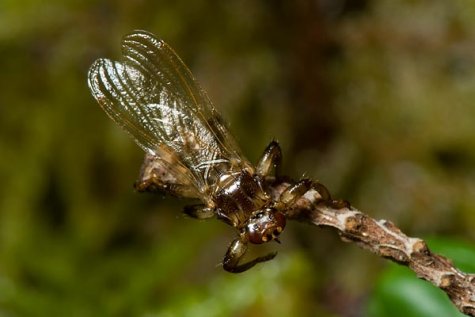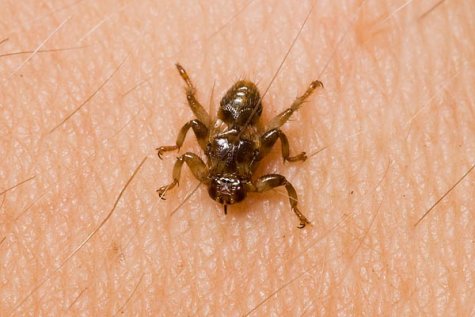The deer fly scourge
Photoa: Arne Ader
Translation: Liis
Deer fly
Deer fly; deer ked Põdrakärbes Lipoptena cervi
Moving along the „elk paths“ on the weekend deer fly attacks were already a fact. On animal tracks and near salt licks the flies were abundant, in the berry forests the nuisance had not yet arrived. But no wonder, the heart of summer is going towards its end with rye getting fully ripe.
In the beginning of early autumn the tormentors will already be massively present. Having emerged from the pupae, they use their wings to fly to the closest plant or shrub – we have to do with really poor fliers. There they remain waiting for the „host animal“; when the victim has been targeted the wings are used for the last time to hit the host and hide into its fur. At the same time the wings are broken off, presumably they will not be needed any more; and operating without them is more comfortable.
Hidden in the fur of an elk the deer fly has to endure being scrubbed against trees, rolled in mud and what not more. Staying put in the fur is helped by the long legs equipped with serrated claws, and hairs covering the body on the otherwise smooth chitin skeleton. In Arne’s photo everything shows quite nicely - and in the forest you can see for yourself.
Of course deer flies bite: why the host’s blood? – always for the continuation of the species. The bite spot where the deer fly sucked blood mixed with its own saliva swells up and itches unpleasantly. In recent years it has been noted that in sensitive people the bites may cause allergic reactions.
We can use a fine comb and shake out our clothes on leaving a forest. When the scourge becomes too bad we clear off from the forests. No-one would like to be a furred forest creature now ....
Deer fly










